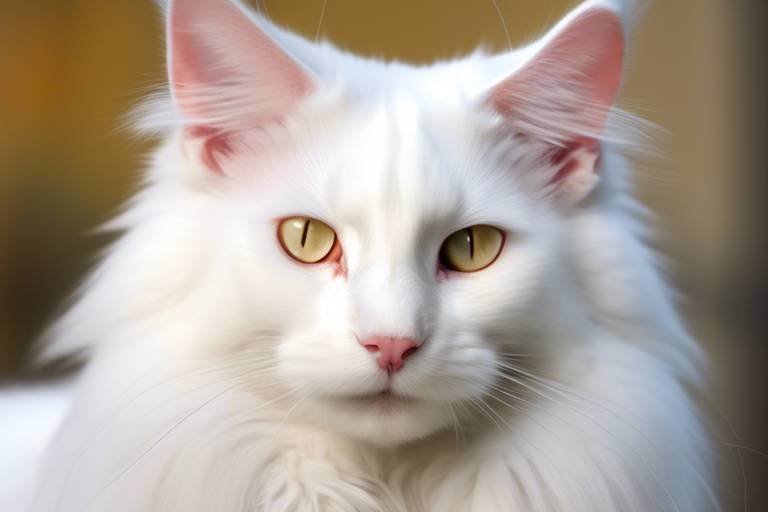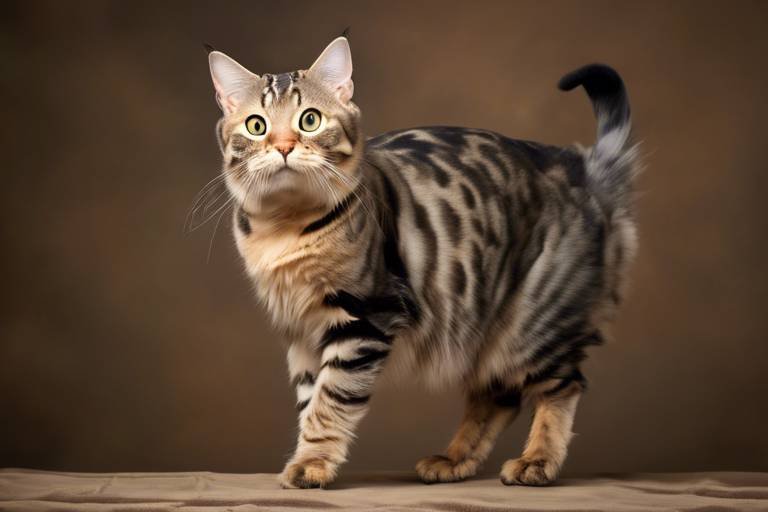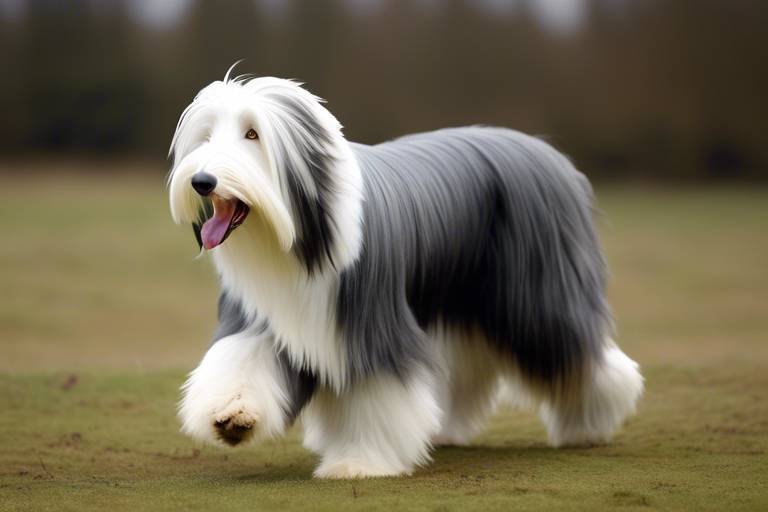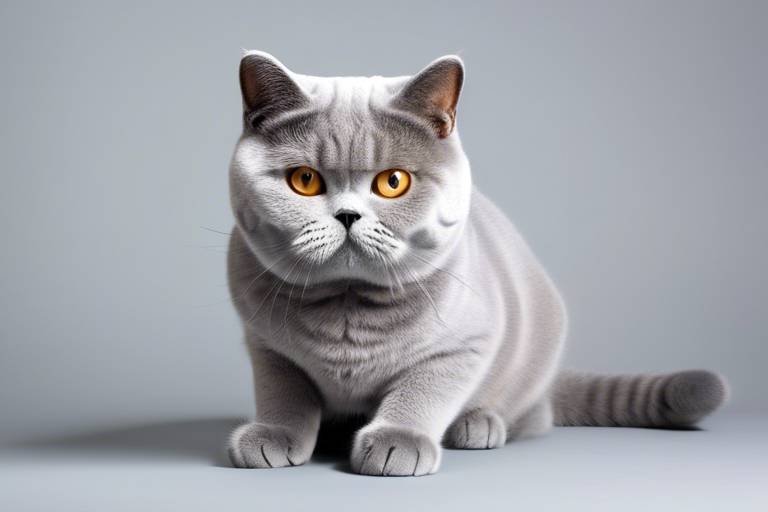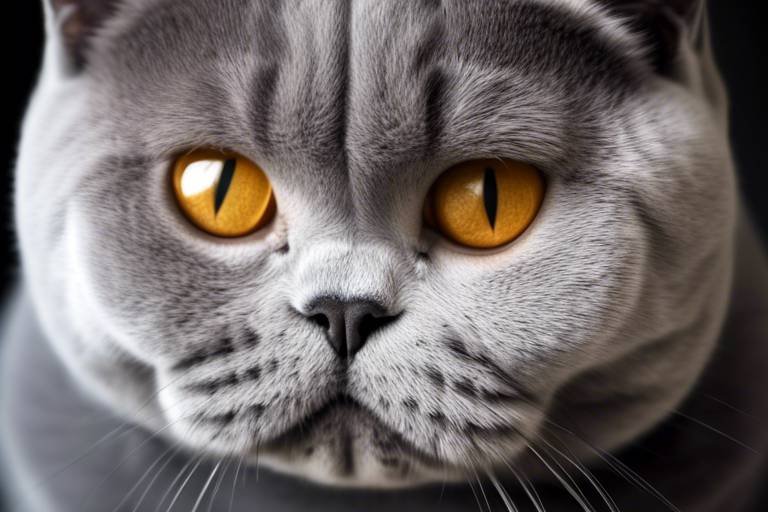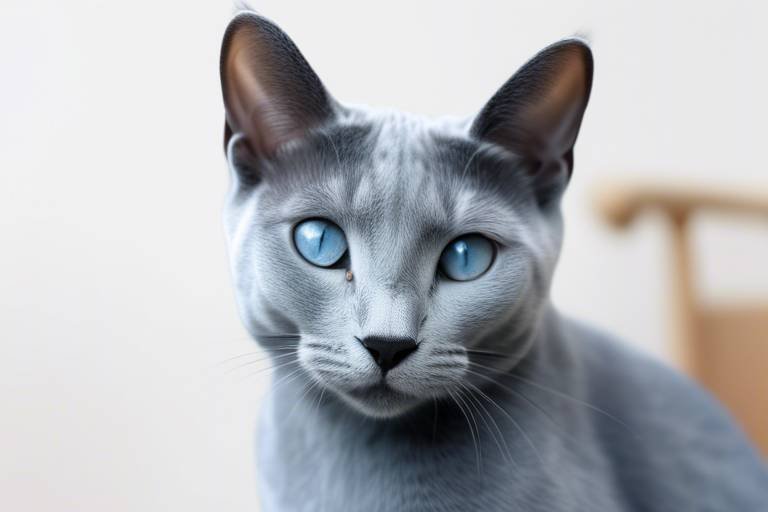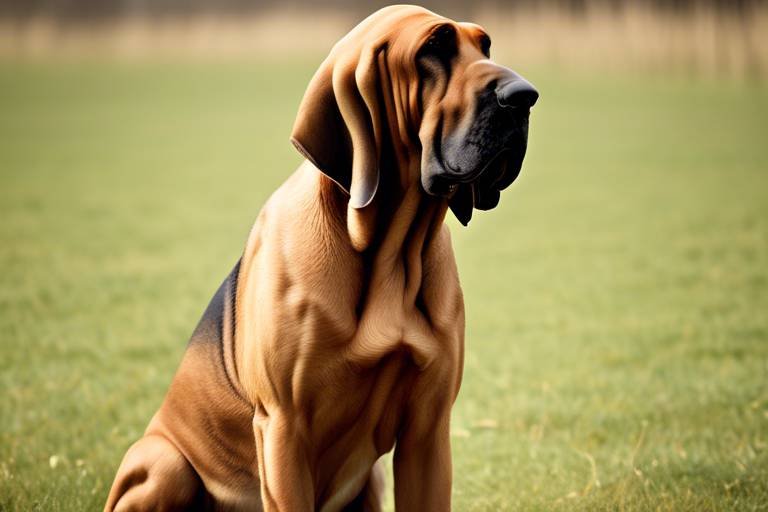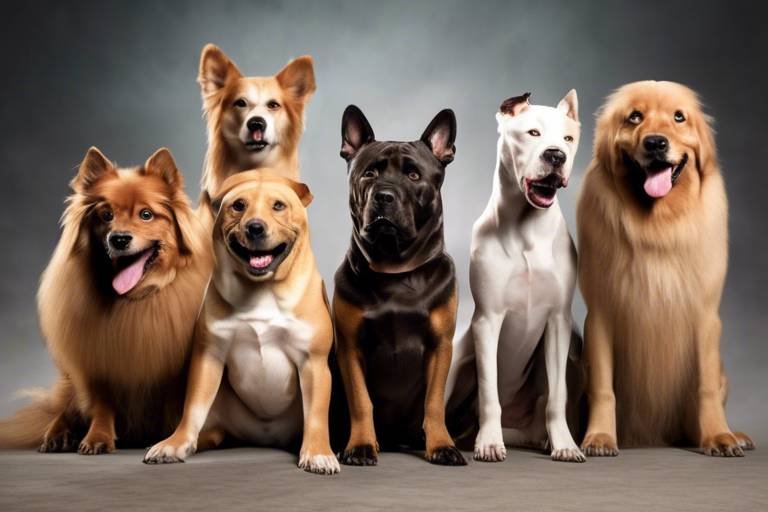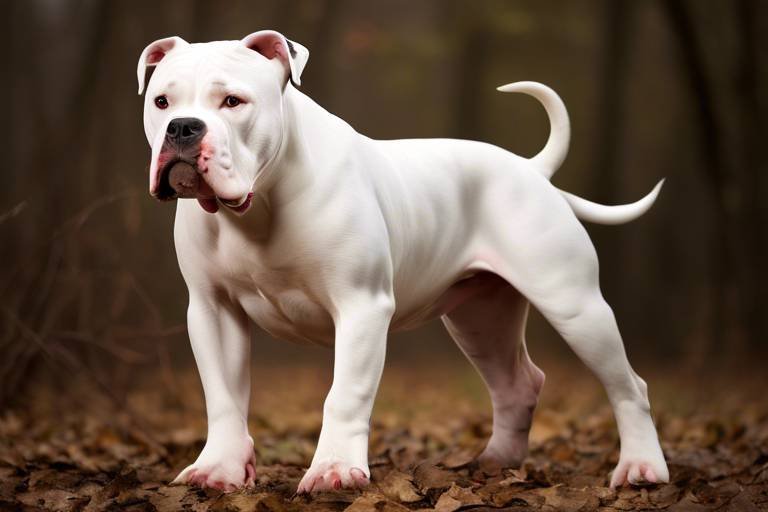Understanding the Unique Traits of the Turkish Angora
The Turkish Angora is not just any cat; it’s a breed that encapsulates elegance, charm, and a playful spirit. Originating from the Ankara region of Turkey, these cats have a rich history that dates back centuries. They are known for their stunning appearance, characterized by their long, silky fur and expressive eyes that can be blue, green, or even amber. But what truly sets the Turkish Angora apart is their unique personality and adaptability, making them suitable companions for various households.
Imagine coming home after a long day, and there’s your Turkish Angora, ready to greet you with a gentle nudge and a playful pounce. Their affectionate nature and intelligence allow them to bond closely with their human companions, creating a deep and lasting relationship. These cats are not just pets; they become part of the family, often following their owners around the house, curious about every little activity. Their playful antics can easily bring a smile to your face, transforming mundane moments into delightful memories.
One of the remarkable traits of the Turkish Angora is their adaptability. Whether you live in a cozy apartment or a spacious house, these cats can adjust to different living conditions with ease. They thrive in environments where they can explore, play, and engage with their human companions. However, it’s essential to provide them with a stimulating environment filled with toys, climbing structures, and places to perch, as their playful nature requires regular mental and physical exercise.
In addition to their playful demeanor, Turkish Angoras are known for their intelligence. They are quick learners and can be trained to perform tricks or follow commands with the right approach. Using positive reinforcement methods, such as treats and praise, can make training sessions enjoyable for both the cat and the owner. This intelligence also means they can get bored easily, so it’s crucial to keep their environment dynamic and engaging.
As we delve deeper into the characteristics of the Turkish Angora, we’ll explore their history, physical traits, grooming needs, temperament, and health considerations. Understanding these aspects will not only help potential owners appreciate this breed but also equip them with the knowledge to provide the best care possible. So, let’s embark on this journey to discover what makes the Turkish Angora such a unique and beloved breed!
- Are Turkish Angoras good with children? Yes, Turkish Angoras are known for their playful and affectionate nature, making them great companions for children.
- How much grooming do Turkish Angoras require? Their long fur needs regular brushing to prevent matting and to keep their coat healthy.
- What is the typical lifespan of a Turkish Angora? With proper care, Turkish Angoras can live between 12 to 18 years.
- Do Turkish Angoras get along with other pets? Generally, they are sociable and can adapt well to living with other pets if introduced properly.

History of the Turkish Angora
The Turkish Angora is not just a cat breed; it is a living piece of history that traces its roots back to the enchanting landscapes of Turkey. This breed's journey began centuries ago, with evidence suggesting that they were among the first domesticated cats, cherished by the people of the Ankara region. Their name, "Angora," is derived from the ancient name of Ankara, which was once known as Angora. Isn't it fascinating how a name can carry such rich history?
During the 16th century, Turkish Angoras gained popularity in Europe as they were brought back by traders and travelers. These cats were admired for their beauty and elegance, quickly becoming a symbol of luxury and sophistication. In fact, they were often seen in the homes of royalty and the upper class. Just imagine a regal cat lounging in a grand palace, basking in the admiration of its human companions!
As time passed, the Turkish Angora faced challenges that threatened its existence. In the mid-20th century, the breed was at risk of extinction due to crossbreeding and the introduction of other cat breeds. However, dedicated breeders and cat enthusiasts recognized the unique qualities of the Turkish Angora and took action to preserve its lineage. They established breeding programs that focused on maintaining the breed's distinct traits, ensuring that future generations could enjoy the charm of these magnificent felines.
Today, the Turkish Angora is not only cherished in its homeland but has also found a special place in the hearts of cat lovers around the globe. Their playful demeanor, striking appearance, and affectionate nature make them a beloved companion in many households. It's a testament to how a breed can evolve and adapt while still holding onto its historical roots. The Turkish Angora is a reminder of the deep connection between humans and animals, woven through time and culture.
As we explore the history of the Turkish Angora, it’s important to recognize their contribution to the world of cats. They are not just pets; they are a bridge to the past, representing a lineage that has survived the test of time. Their journey from the streets of Ankara to homes worldwide is a story of resilience, beauty, and love.
- What is the origin of the Turkish Angora?
The Turkish Angora originated in Turkey, specifically in the Ankara region, and has a rich history that dates back centuries. - Why are Turkish Angoras considered a unique breed?
They are known for their striking appearance, playful personality, and affectionate nature, making them stand out among other cat breeds. - How did the Turkish Angora nearly become extinct?
In the mid-20th century, crossbreeding and the introduction of other breeds threatened their existence, but dedicated breeders worked to preserve them.
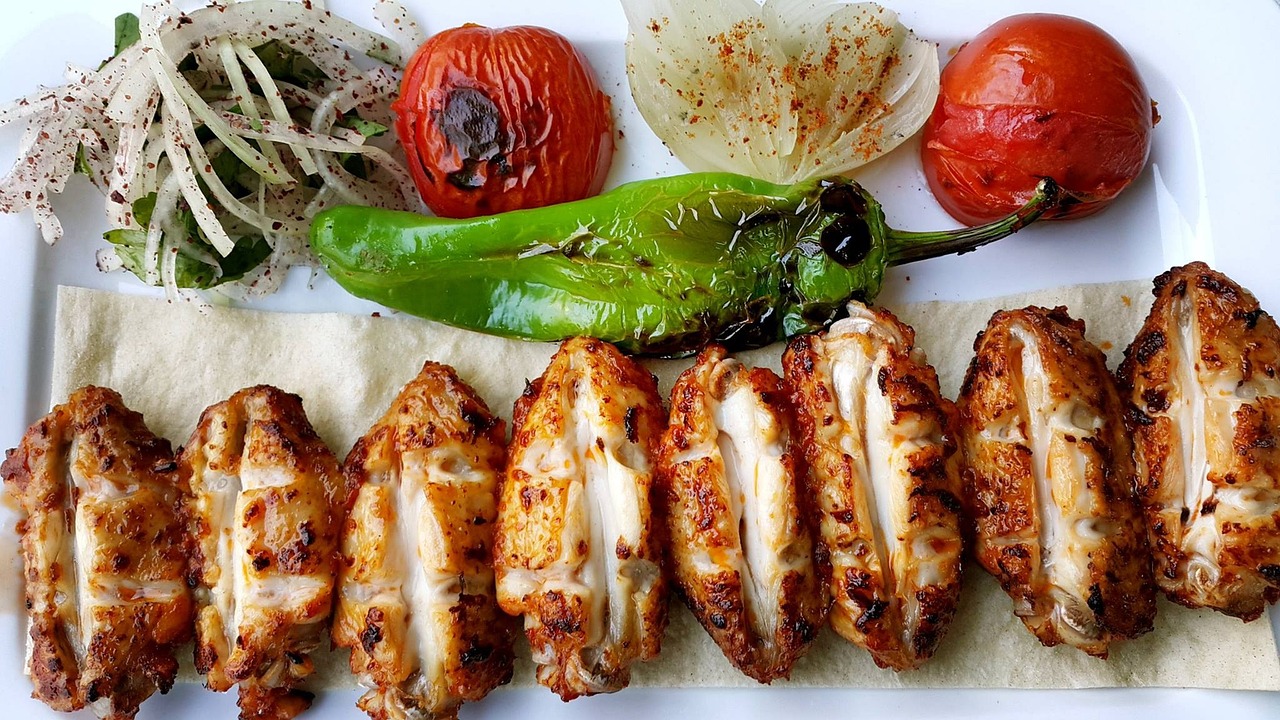
Physical Characteristics
The Turkish Angora is a breed that captivates the heart with its striking physical traits. These cats are not just another pretty face; their elegant body structure and unique features make them stand out in any room. With a graceful build and a slender frame, the Turkish Angora embodies agility and poise. Their long legs and well-defined muscles allow them to move with a fluidity that is simply mesmerizing. It's almost as if they were designed for the stage, ready to perform at any moment!
One of the most notable features of the Turkish Angora is their silky fur. This breed boasts a medium-length coat that feels as luxurious as it looks. The fur is soft, fine, and often has a slight sheen, making it incredibly appealing to touch. But don't let the beauty fool you; maintaining that gorgeous coat requires some effort. Regular grooming is essential to keep their fur free from mats and tangles, ensuring they always look their best.
When it comes to colors, the Turkish Angora is a true artist's palette. Although the classic white coat is the most recognized, these cats come in a wide variety of colors and patterns. From stunning tabby to beautiful bicolor, the options are endless. Here’s a quick overview of some common coat colors:
| Color | Description |
|---|---|
| White | Classic and most recognized color, often with blue or amber eyes. |
| Black | Deep, rich color that highlights their elegant features. |
| Tabby | Unique patterns that add character and charm. |
| Calico | A mix of white, black, and orange patches, showcasing individuality. |
Speaking of eyes, the Turkish Angora's captivating eye colors are another defining trait. They can have a range of eye colors including blue, amber, and green. Interestingly, some cats may even have one blue eye and one amber eye, a striking feature that adds to their charm. These vibrant eyes not only contribute to their beauty but also reflect their curious and intelligent nature. You can often find them observing their surroundings with a keen interest, as if they are trying to understand the world around them.
In summary, the Turkish Angora is not just a feast for the eyes; they are a combination of elegance, beauty, and personality. Their physical characteristics, from their silky fur to their stunning eyes, make them a breed that is hard to resist. Whether they are prancing around your living room or curling up in your lap, these cats are sure to leave a lasting impression.
- What is the average size of a Turkish Angora? Turkish Angoras typically weigh between 5 to 10 pounds and have a medium-sized body.
- Do Turkish Angoras require special grooming? Yes, their medium-length coat requires regular brushing to prevent mats and tangles.
- Are Turkish Angoras good with children? Absolutely! They are known for their playful and affectionate nature, making them great companions for families.
- What is the lifespan of a Turkish Angora? With proper care, Turkish Angoras can live between 12 to 18 years.
Coat Types and Colors
The Turkish Angora is not just another pretty face in the feline world; their are as diverse as their personalities! Known for their luxurious, silky fur, these cats come in a variety of hues and patterns that can leave any cat lover in awe. The most iconic representation of the Turkish Angora is the stunning pure white coat, which has often been associated with the breed's royal heritage. However, this breed is anything but one-dimensional. They can flaunt a rainbow of colors, including black, blue, cream, red, and even tabby patterns, showcasing their unique individuality.
What makes the Turkish Angora truly captivating is not just the color of their fur but also the texture and length. Their coats are medium to long, with a fine, silky quality that feels luxurious to the touch. This beautiful fur can come in various patterns, from solid colors to spotted, striped, and mottled designs. Some Turkish Angoras even exhibit a stunning color-point pattern, where their extremities—ears, face, paws, and tail—are darker than the rest of their body. This visual diversity adds to their charm, making them stand out in any home.
When it comes to grooming, maintaining the beauty of a Turkish Angora's coat is essential. Regular brushing is necessary to prevent mats and tangles, especially in the longer fur areas. A simple grooming routine can keep their coats looking fabulous, while also providing an opportunity for bonding between the cat and its owner. The frequency of brushing may vary depending on the individual cat's coat type, but a good rule of thumb is to brush them at least once a week, or more often during shedding seasons.
In addition to their beautiful coats, the Turkish Angora's eye colors are equally striking. They can have mesmerizing shades of blue, green, amber, or even odd-eyed (one blue and one green). This unique combination of coat and eye colors makes the Turkish Angora a truly remarkable breed, captivating the hearts of many cat enthusiasts.
In summary, the Turkish Angora's coat types and colors are a significant part of what makes them such beloved pets. Their luxurious fur and stunning eye colors not only enhance their physical beauty but also contribute to their overall appeal as affectionate and playful companions. So, if you're considering adding a Turkish Angora to your family, get ready for a furry friend that’s as visually striking as they are charming!
Grooming Needs
When it comes to grooming your Turkish Angora, you'll find that their stunning coat is both a blessing and a bit of a challenge. Their silky, long fur requires regular maintenance to keep it looking its best. Imagine trying to maintain a beautiful waterfall; it needs constant care to flow perfectly! With a Turkish Angora, the same principle applies. Regular brushing is essential, ideally every few days, to prevent mats and tangles from forming. This not only keeps their coat looking fabulous but also reduces shedding around your home.
One of the best tools for grooming your Angora is a wide-toothed comb or a slicker brush. These tools will help you glide through their luxurious fur without causing discomfort. It's also a good idea to introduce grooming sessions early on, so your cat becomes accustomed to the process. Think of it as a bonding time; you’re not just grooming; you’re spending quality time together, which helps strengthen your relationship.
Bathing your Turkish Angora is another aspect of their grooming needs. While they don't require frequent baths—usually only once every few months—you might want to consider it if they get into something messy or if their coat starts to look dull. When bathing, use a gentle cat shampoo and ensure you rinse thoroughly. Remember, a bath can be a new experience for them, so take it slow and make it as enjoyable as possible. You might even want to reward them with a treat afterward!
In addition to brushing and bathing, it's important to keep an eye on their nails, ears, and teeth. Regular nail trimming is crucial to prevent overgrowth and discomfort. For their ears, a quick weekly check can help you catch any signs of wax buildup or infection. As for their teeth, incorporating dental treats into their diet can promote good oral hygiene. You might think of these tasks as part of a routine health check; after all, a healthy cat is a happy cat!
To summarize the grooming needs of Turkish Angoras, here's a quick reference table:
| Grooming Task | Frequency | Tools Needed |
|---|---|---|
| Brushing | Every 2-3 days | Slicker brush, wide-toothed comb |
| Bathing | Every few months | Cat shampoo, towels |
| Nail Trimming | Every 2-4 weeks | Nail clippers |
| Ears Check | Weekly | Cotton balls, ear cleaner |
| Teeth Care | Daily (with treats) | Dental treats, toothbrush (optional) |
By keeping up with these grooming practices, you ensure that your Turkish Angora remains not only beautiful but also healthy. Remember, grooming is more than just a chore; it’s a chance to connect with your furry friend and show them just how much you care!
- How often should I groom my Turkish Angora? It's best to brush them every 2-3 days to keep their coat healthy and free of tangles.
- Do Turkish Angoras like baths? While they may not love it, occasional baths can help keep their coat clean and shiny.
- What tools do I need for grooming? A slicker brush, wide-toothed comb, nail clippers, and possibly a gentle cat shampoo are essential for grooming.
- How can I make grooming enjoyable for my cat? Start grooming sessions early, use treats, and keep the experience positive and calm.
Shedding Patterns
When it comes to the Turkish Angora, their shedding patterns can be quite fascinating. These cats are known to have a medium-length coat that requires some attention, especially during certain times of the year. Typically, Turkish Angoras shed more in the spring and fall as they transition between their winter and summer coats. This natural cycle is essential for keeping them comfortable in varying temperatures, but it can also lead to an increase in fur around your home.
During the shedding season, you might notice that your Turkish Angora’s coat feels a bit fluffier than usual. This is because they are losing their undercoat, which is a crucial part of their insulation. To manage this shedding effectively, regular grooming becomes essential. Brushing your cat a few times a week can significantly reduce the amount of hair that ends up on your clothes and furniture. Not only does it help control shedding, but it also promotes a healthy coat and allows you to bond with your furry friend.
It's important to understand that the shedding patterns can vary from one Turkish Angora to another. Some may shed more than others based on factors like age, health, and even diet. For example, a well-balanced diet rich in omega fatty acids can contribute to a healthier coat and potentially reduce excessive shedding. If you’re concerned about your cat’s shedding, keeping track of their grooming routine and dietary habits can provide valuable insights.
Additionally, if you live in a region with a consistent climate, you might notice that your Turkish Angora sheds less frequently compared to those in areas with extreme seasonal changes. The key takeaway here is to remain observant and proactive. Regular grooming, combined with a nutritious diet, can help keep your home fur-free and your cat looking fabulous!
- Do Turkish Angoras shed a lot? Yes, they can shed more during seasonal changes, particularly in spring and fall.
- How often should I groom my Turkish Angora? It's recommended to brush them a few times a week, especially during shedding seasons.
- Can diet affect shedding? Absolutely! A well-balanced diet can lead to a healthier coat and may help reduce excessive shedding.
- Are there any specific grooming tools I should use? A slicker brush or a grooming glove can be effective tools for managing their medium-length coat.
Temperament and Personality
The Turkish Angora is not just a pretty face; their personality is as captivating as their appearance. These felines are known for their playful and affectionate nature, making them delightful companions for families and individuals alike. Imagine a cat that not only wants to curl up on your lap but also engages in spirited play sessions that can brighten even the dullest day. Their affectionate demeanor is often described as dog-like, as they form strong bonds with their human companions and may even follow them around the house. This unique trait makes them feel like a true member of the family, rather than just a pet.
One of the most fascinating aspects of the Turkish Angora's personality is their intelligence. They are curious creatures, always eager to explore their surroundings and engage in activities that stimulate their minds. This intelligence can sometimes lead them to be a bit mischievous, as they love to investigate anything that piques their interest. Whether it’s a rustling bag or a flickering shadow, you can bet they’ll be right in the middle of the action, showcasing their playful antics. Their inquisitive nature means they thrive in environments where they can explore and play, so it's essential to provide them with plenty of toys and interactive games.
In addition to their playful side, Turkish Angoras are known for their social nature. They tend to get along well with other pets, including dogs, which can be a significant advantage for multi-pet households. Their friendly disposition allows them to adapt to different environments, whether it’s a bustling family home or a quieter apartment setting. However, it's important to remember that they do require social interaction. If left alone for long periods, they may become bored or anxious, leading to unwanted behaviors. Therefore, it’s crucial to spend quality time with them, engaging in play or simply enjoying each other's company.
Overall, the Turkish Angora's temperament is a blend of affection, intelligence, and playfulness. They are cats that thrive on companionship and mental stimulation. If you're considering adding one of these charming felines to your home, be prepared for a lively, loving, and engaging pet that will undoubtedly bring joy and excitement into your life. Their unique personality traits make them not just pets, but true companions who will keep you entertained and loved.
- Are Turkish Angoras good with children?
Yes, Turkish Angoras are typically very good with children. Their playful nature and affectionate demeanor make them great companions for kids. - Do Turkish Angoras require a lot of attention?
Yes, they thrive on social interaction and can become bored or anxious if left alone for long periods. - How intelligent are Turkish Angoras?
Turkish Angoras are highly intelligent and curious, often requiring mental stimulation through play and exploration.

Health Considerations
When it comes to the Turkish Angora, understanding their health considerations is crucial for ensuring they lead a long and happy life. This breed, known for its playful and affectionate demeanor, can be prone to certain health issues that every owner should be aware of. Regular veterinary check-ups are essential, as they can help catch potential problems early on, allowing for timely intervention. Just like us, these cats require routine care to stay fit and healthy!
One of the common health concerns in Turkish Angoras is hypertrophic cardiomyopathy (HCM), a condition that affects the heart muscle, leading to potential heart failure. It’s vital to monitor their heart health through regular vet visits, especially as they age. Additionally, they can be susceptible to genetic disorders, which may arise from their lineage. This is why choosing a reputable breeder who conducts health screenings is so important.
Another aspect to consider is their dietary needs. A balanced diet that caters to their specific nutritional requirements can help prevent obesity, which is a common issue in indoor cats. Feeding them high-quality cat food rich in protein and essential nutrients will not only keep them active but also support their overall health. Remember, a well-fed cat is a happy cat!
| Common Health Issues | Symptoms | Prevention |
|---|---|---|
| Hypertrophic Cardiomyopathy (HCM) | Breathing difficulties, lethargy, sudden collapse | Regular vet check-ups, heart screenings |
| Obesity | Weight gain, lethargy, difficulty grooming | Balanced diet, regular exercise |
| Genetic Disorders | Varies by condition | Choose reputable breeders, health screenings |
Don’t forget to keep an eye on their dental health, as dental disease can affect their overall well-being. Regular tooth brushing and providing dental treats can help maintain healthy teeth and gums. Additionally, Turkish Angoras are known for their vibrant personalities, and any sudden changes in behavior could indicate health issues, so stay vigilant!
In conclusion, while the Turkish Angora is a resilient breed, being proactive about their health can make a significant difference in their quality of life. Regular vet visits, a nutritious diet, and attentive care are the keys to keeping your furry friend vibrant and full of life.
- What are the signs of health issues in Turkish Angoras?
Watch for changes in appetite, energy levels, and grooming habits, as these can be indicators of health problems. - How often should I take my Turkish Angora to the vet?
It's recommended to schedule annual check-ups, but more frequent visits may be necessary for older cats or those with existing health issues. - What type of diet is best for a Turkish Angora?
A high-protein diet with essential nutrients is ideal. Consult your vet for specific recommendations based on your cat's age and activity level.
Dietary Needs
When it comes to the Turkish Angora, understanding their dietary needs is essential for maintaining their health and vitality. These cats are not just beautiful; they are also active and playful, which means they require a well-balanced diet to support their energetic lifestyle. Just like us, their nutritional needs can vary based on factors such as age, weight, and activity level. So, what should you feed your Turkish Angora to keep them in tip-top shape?
A high-quality commercial cat food is typically recommended, but it’s crucial to choose a brand that prioritizes real meat as the primary ingredient. Cats are obligate carnivores, which means they thrive on a diet rich in animal proteins. Look for foods that contain chicken, turkey, or fish as the first ingredient. This not only provides the necessary protein but also supports their muscle development and overall health.
In addition to protein, Turkish Angoras also need a balanced intake of fats, carbohydrates, vitamins, and minerals. Here’s a quick breakdown of what to look for:
| Nutrient | Importance |
|---|---|
| Protein | Supports muscle growth and energy levels. |
| Fats | Essential for energy and healthy skin and coat. |
| Carbohydrates | Provides a source of energy, but should be limited. |
| Vitamins & Minerals | Supports overall health and immune function. |
Furthermore, hydration is key! Always ensure that your Turkish Angora has access to fresh, clean water. Some cats prefer drinking from a bowl, while others might enjoy a cat water fountain, which can encourage them to drink more. Remember, a well-hydrated cat is a healthy cat!
It’s also important to monitor their weight and adjust their food portions accordingly. Overfeeding can lead to obesity, which is a common problem in indoor cats. If you're unsure about how much to feed your Turkish Angora, consult with your veterinarian for tailored advice based on your cat’s specific needs.
Lastly, treats can be a fun way to bond with your furry friend, but moderation is key. Opt for healthy treats that complement their diet rather than junk food that offers little nutritional value. This keeps their diet balanced while also allowing for a little indulgence.
In summary, providing a balanced diet rich in high-quality proteins, healthy fats, and essential nutrients will help your Turkish Angora thrive. Regular vet check-ups can help you keep track of their dietary needs as they age, ensuring they remain the playful, loving companions we adore.
- What is the best type of food for a Turkish Angora?
High-quality cat food with real meat as the first ingredient is best. - How much should I feed my Turkish Angora?
Feeding amounts can vary; consult your vet for personalized recommendations. - Can Turkish Angoras eat human food?
Some human foods are safe in moderation, but avoid those that are toxic to cats. - How can I encourage my cat to drink more water?
Try providing a cat water fountain or adding water to their food.
Exercise and Play
When it comes to the Turkish Angora, exercise and play are not just luxuries—they're essential components of their daily lives. These cats are known for their boundless energy and playful nature, which means that keeping them engaged is crucial for their happiness and well-being. Imagine a little whirlwind of fur zooming around your living room, chasing after a feather toy or pouncing on a laser dot; that's the Turkish Angora for you! They thrive in environments where they can express their natural instincts, and providing them with adequate playtime can help prevent behavioral issues that stem from boredom.
One of the best ways to ensure your Turkish Angora gets enough exercise is to incorporate a variety of stimulating activities into their routine. This breed is highly intelligent and curious, so they benefit from both physical and mental challenges. You might consider setting up a play area with climbing trees, scratching posts, and interactive toys that require them to think and strategize. For example, puzzle feeders can be a fantastic way to combine play with mental stimulation, encouraging your Angora to work for their treats.
Moreover, regular playtime isn’t just beneficial for your cat; it can also strengthen the bond between you. Engaging in play sessions where you toss a ball or dangle a string can create a shared experience that enhances your relationship. It's important to remember that playtime should be frequent and varied. Aim for at least two short play sessions each day, and don’t hesitate to switch up the toys to keep things fresh. Here are some activities you might consider:
- Interactive Toys: Toys that move or make noise can capture their attention and encourage them to pounce and chase.
- Feather Wands: These are perfect for mimicking the movements of prey, tapping into their hunting instincts.
- Laser Pointers: A classic favorite, just be sure to end the session with a tangible toy so they can "catch" something!
In addition to structured playtime, providing opportunities for your Turkish Angora to explore can also be beneficial. Consider creating a safe outdoor enclosure or allowing supervised outdoor time if your environment permits. This not only gives them a chance to stretch their legs but also exposes them to new sights and sounds, which can be incredibly enriching.
Finally, don’t underestimate the power of social play. If you have other pets, your Turkish Angora may enjoy engaging with them, as long as they are properly socialized. Just like kids on a playground, cats can learn and grow through interaction with their peers. Whether they are chasing each other around the house or sharing a cozy spot together, these interactions can contribute significantly to their overall happiness.
- How much exercise does a Turkish Angora need daily? Aim for at least 30 minutes of active play each day, divided into several sessions.
- What are the best toys for Turkish Angoras? Interactive toys, feather wands, and laser pointers are excellent choices for keeping them engaged.
- Can Turkish Angoras play outside? Yes, but they should be supervised to ensure their safety from potential dangers.

Training Tips
Training your Turkish Angora can be a rewarding experience, not just for you but for your feline friend as well. These cats are known for their intelligence and curiosity, which means they can pick up on commands and tricks quite easily. However, it's essential to approach training with the right mindset and techniques to ensure success. Imagine trying to teach a child to ride a bike; you wouldn’t just shove them onto the seat and expect them to pedal away. Similarly, with Turkish Angoras, patience and encouragement are key!
One of the most effective methods for training these cats is through positive reinforcement. This means rewarding your Turkish Angora with treats, praise, or playtime whenever they perform a desired behavior. For instance, if your cat uses the litter box correctly or responds to their name, offer them a small treat or a gentle scratch behind the ears. This not only reinforces the behavior but also strengthens the bond between you and your pet. Think of it as a high-five for a job well done!
Consistency is another crucial aspect of training. Establish a routine that your Turkish Angora can rely on. For example, if you're teaching them to come when called, use the same command every time, such as "come" or "here." Repetition helps solidify their understanding, much like how kids learn their ABCs through songs and games. Additionally, keep training sessions short and fun—around 5 to 10 minutes is ideal. This prevents your cat from losing interest and keeps their enthusiasm high.
It’s also important to remember that Turkish Angoras are very social creatures. They thrive on interaction, so incorporating play into your training sessions can be beneficial. Use their favorite toys to encourage them to follow commands or to perform tricks. For example, you can dangle a feather toy while asking them to jump or roll over. This not only makes the training session enjoyable but also taps into their natural instincts to chase and play.
Here are some practical tips to keep in mind while training your Turkish Angora:
- Start young: If possible, begin training when your cat is a kitten. Younger cats are generally more adaptable and eager to learn.
- Be patient: Every cat learns at their own pace. If your Turkish Angora isn't catching on right away, take a step back and try again later.
- Avoid punishment: Negative reinforcement can lead to fear and anxiety. Instead, focus on rewarding good behavior.
- Use clicker training: This method can be highly effective. The sound of the clicker signifies that they’ve done something right and that a reward is coming!
Remember, the goal of training is not just to teach your Turkish Angora commands but also to enhance your relationship. As you embark on this journey together, you’ll find that the process is as enjoyable as the results. Celebrate small victories and cherish the playful moments you share. After all, every paw print left on your heart is a testament to the love and companionship that your Turkish Angora brings into your life.
Q: How long does it take to train a Turkish Angora?
A: Training duration can vary, but with consistent practice, you can see results in a few weeks. Remember to keep sessions short and engaging!
Q: Can I train my Turkish Angora to walk on a leash?
A: Yes! Many Turkish Angoras can be trained to walk on a leash. Start by getting them accustomed to the harness indoors before venturing outside.
Q: What are some common tricks I can teach my Turkish Angora?
A: You can teach them basic commands like "sit," "stay," and "come." Advanced tricks like "high five" or "roll over" can also be fun challenges!
Q: Is it too late to train my older Turkish Angora?
A: It's never too late! Older cats can still learn new tricks. Just be patient and adjust your training methods to suit their personality.

Choosing the Right Environment
When it comes to ensuring your Turkish Angora feels at home, the right environment is crucial. These cats are not just any ordinary pets; they have a unique blend of elegance and playfulness that requires a thoughtful living space to thrive. Imagine your Turkish Angora as a little prince or princess, needing a castle that suits their royal demeanor. So, what does this castle look like? Let’s dive in!
First and foremost, space is a significant factor. Turkish Angoras are known for their agility and love for climbing. They appreciate a home that offers vertical space to explore. Think of cat trees, shelves, or even a designated window perch that allows them to survey their kingdom from above. This not only satisfies their natural instincts but also keeps them entertained for hours. A cozy corner with soft bedding and a few toys can be their personal retreat where they can unwind after a day of play.
Next, consider the environmental factors. Turkish Angoras are quite adaptable, but they thrive in a comfortable climate. A temperature-controlled space is ideal, as they can be sensitive to extreme heat or cold. If you live in a particularly hot area, make sure your home is well-ventilated and that your cat has access to shaded areas. Conversely, during winter months, ensure they have warm spots to curl up in. A gentle breeze from an open window can be delightful in the warmer months, but make sure they can’t escape on their adventures!
Another essential aspect is social interaction. Turkish Angoras are social creatures who love to bond with their human companions. They flourish in environments where they can interact frequently. If you have a busy lifestyle, consider adopting a pair; they can keep each other company, reducing feelings of loneliness. This breed thrives on affection and attention, so make sure your home allows for plenty of cuddle time and play sessions.
To further enhance their living space, consider enriching their environment with:
- Interactive toys: Toys that stimulate their hunting instincts can keep them engaged.
- Scratching posts: Essential for their claw health and to prevent them from scratching furniture.
- Safe plants: Some plants can be toxic to cats, so ensure any greenery is safe for your furry friend.
Finally, it's essential to maintain a clean environment. Regularly clean their litter box and ensure that their food and water bowls are fresh. A clean space contributes significantly to their overall happiness and health. Remember, a happy Turkish Angora is a playful and affectionate companion!
Q: Can Turkish Angoras live in small apartments?
A: Yes, as long as they have vertical space and opportunities for play, they can adapt well to smaller living spaces.
Q: Do Turkish Angoras require a lot of attention?
A: They thrive on social interaction, so regular attention and playtime are essential for their well-being.
Q: Are Turkish Angoras good with children and other pets?
A: Generally, they are friendly and adaptable, making them good companions for families and other pets, provided they are introduced properly.
Frequently Asked Questions
- What is the history of the Turkish Angora breed?
The Turkish Angora has a rich history that dates back to Turkey, where they were cherished for their beauty and grace. Over the centuries, they have evolved into beloved companions, gaining popularity around the world due to their unique traits and affectionate nature.
- What are the physical characteristics of Turkish Angoras?
Turkish Angoras are known for their striking appearance, featuring silky fur, an elegant body structure, and captivating eye colors. Their unique look makes them stand out in any household, with their graceful movements and playful demeanor adding to their charm.
- How do I groom a Turkish Angora?
Grooming a Turkish Angora is essential to maintain their beautiful coat. Regular brushing helps prevent matting and keeps their fur looking pristine. It's also important to bathe them occasionally to keep their coat healthy and shiny.
- What are the typical shedding patterns of Turkish Angoras?
Turkish Angoras experience seasonal shedding, particularly during spring and fall. To manage shedding, regular grooming is key, as it helps minimize hair around your home while keeping your furry friend comfortable.
- What is the temperament of a Turkish Angora?
Turkish Angoras are known for their playful and affectionate nature. Their intelligence makes them eager to engage in play, and they often form strong bonds with their human companions, making them ideal pets for families and individuals alike.
- What health considerations should I be aware of?
Regular veterinary check-ups are crucial for Turkish Angoras to catch any potential health issues early. Common health concerns include genetic conditions, so preventive care is essential to ensure a long and healthy life for your pet.
- What dietary needs do Turkish Angoras have?
Turkish Angoras require a balanced diet that supports their active lifestyle. High-quality cat food rich in protein is essential for their overall well-being, and it's important to provide fresh water at all times.
- How much exercise do Turkish Angoras need?
These cats are energetic and playful, so regular exercise is vital. Playtime with toys, climbing structures, and interactive games will keep them mentally stimulated and physically fit.
- What are some training tips for Turkish Angoras?
Training a Turkish Angora can be a fun experience! Utilizing positive reinforcement techniques, like treats and praise, will encourage good behavior and make learning enjoyable for both you and your cat.
- What type of environment is best for a Turkish Angora?
Turkish Angoras thrive in a comfortable and safe environment. They need enough space to roam and play, as well as cozy spots to relax. Ensuring a stimulating atmosphere will contribute to their happiness and well-being.

